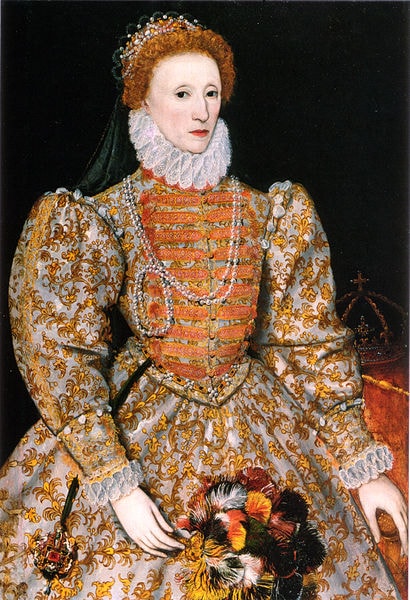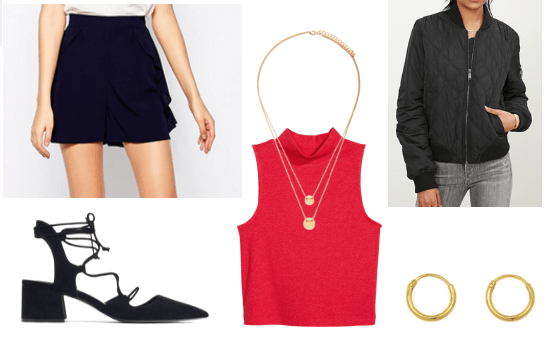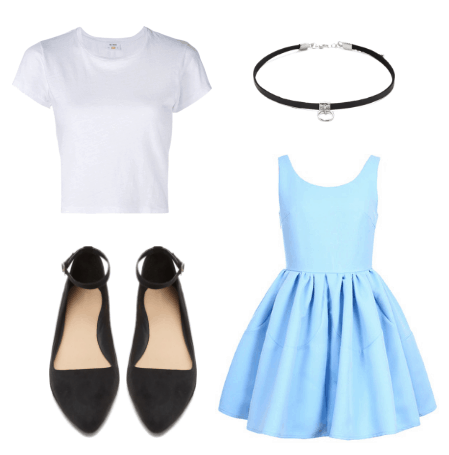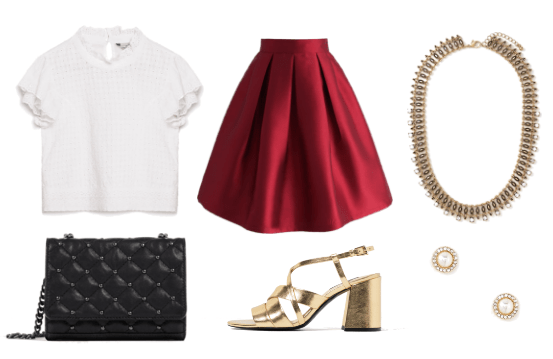
While Elizabethan fashion may have made a comeback several times on the red carpet, it’s never quite made it back to the streets. Not that it’s really a surprise – Elizabethan fashion has never really looked wearable. Ruffs (those starched ruffle collars), for instance, seem as though they might be the worst thing since unsliced bread.
But I have to say, I love love love the look of Elizabethan style. Would I trade my jeans for petticoats? Hell no, but that doesn’t stop Good Queen Bess from being one of my style icons. Of course, there’s more to the style of the era than just ruffs and powdered wigs, so here’s a brief history of Elizabethan fashion:
Table of Contents
Elizabethan Fashion Overview
The Elizabethan era ran from 1558 to 1603, and was considered by some a golden age for England. As the rule of Queen Elizabeth I was also the high point of the English renaissance, it was also a great time for music, art, and, of course, theater (thanks, Shakespeare). As the Queen herself was an avid follower of fashion, the extravagant styles appeared during this time. Though it’s said that Queen Elizabeth dressed casually when left to her own devices, when she was in public, she was always the best dressed person in the room.
By that, I don’t just mean that the Queen’s sartorial choices were extra amazing 24/7 (though they were). The sumptuary taxes that were in place at the time determined what someone was allowed to wear based on their class. Colors, fabrics, and even styles were limited based on one’s station. So, quite literally, no one could dress better than the Queen.
Most Elizabethan women, regardless of class, wore a corset and farthingale (a hoop to hold out the skirt), under a kirtle and overskirt. The bodice, which usually came to a point above the skirt, was traditionally high-necked during the early years of the era, and low and square later on. Men’s fashion usually consisted of a pair of breeches, which came in many different styles, stockings, a shirt, and a doublet or jerkin.
While women’s fashion often emulated men’s, during Queen Elizabeth’s rule, men’s fashion also became more feminine, and some men even wore corsets to achieve slimmer silhouettes. Both men’s and women’s ensembles sought to create a geometric silhouette, with broad shoulders and a slim waist. Of course both gentlemen and ladies also wore ruffs, the styles of which varied throughout the years, reaching truly elaborate heights in the late 1500s.
Outfits Inspired by Elizabethan Fashion
Needless to say, Elizabethan clothing required a lot more work, fabric, and patience than most of our clothing does today. That being said, I tried my best to find ways to fashion the styles of the era into wearable looks.
If you’re not sure if a doublet is right for you, pick look number one. If you think you might like a petticoat, pick number two. And if you’re willing to stay true when the going gets ruff, then number three is the look for you.
Outfit #1: Clothes Make The Man

Products: Top, Shorts, Jacket, Shoes, Necklace, Earrings
As you may have guessed, this look is mostly inspired by the men’s styles of Elizabethan England. Though breeches came in all shapes and sizes, the trunk breech was super popular after the mid 1500s and it’s the style you’ll probably recognize the best. Trunk hose breeches came only to about mid thigh and kind of looked like you were wearing balloons for underwear. A pair of ruffled wide leg shorts takes their place, and a turtleneck top fills in for a casual ruff.
A doublet, which was traditionally worn by men, was a fitted sleeveless jacket (sleeves were a separate item), usually padded or quilted. Since we’re doing a modern look, a quilted bomber jacket achieves a similar effect. The shoes have a short block heel that was common in the decade; I picked lace-up ones for a trendy vibe. Gold pendant necklaces were popular for both men and women, and, if Sir Walter Raleigh is to be believed, so were small hoop earrings.
Outfit #2: Shakespeare In Love

Products: Top, Dress, Shoes, Necklace
I definitely wanted to do a look that was inspired by what the common woman of the era might have worn. From what I can deduce, the average woman’s style was generally a pared-down version of a noblewoman’s. Sleeves and ruffs were usually the first things to go, and so the chemise shirt was visible under a common woman’s gown. To keep things modern, I went with a plain white tee instead. I absolutely love this dress, as it’s reminiscent of a tailored Elizabethan bodice.
According to the Sumptuary Laws, only the nobility could wear jewelry, so I kept the accessories simple. Pendant necklaces were extremely popular, hence the pendant choker, and you could add small silver earrings if you wanted to as well. Finally, plain black flats are a far more comfortable alternative to clogs.
Outfit #3: Long Live The Queen

Products: Top, Skirt, Shoes, Purse, Necklace, Earrings
If you think this outfit is over the top, that’s good because it’s what I was going for. You remember how the Greeks did a lot with a little? Well, Elizabethan nobility did a lot with a lot. A pleated skirt is in keeping with the look of the era, and the crimson color looks a bit more noble. I picked another pair of shoes with a low chunky heel, this time in gold, and a quilted purse, as a tribute to the Elizabethan love for quilting everything.
The shirt has a high collar, which takes the place of a ruff, and ruffled shoulders, since the styles of the era put a lot of attention on creating a broad-shouldered silhouette. Finish off the look with a a gold necklace and matching pearl and gold earrings, and you’ll have a look fit for a queen (literally).
More Styles by the Decade:
Want to travel to a different decade with your style? See my other posts on’90s fashion, ’80s fashion, ’70s fashion, ’60s fashion, ’50s fashion, ’40s fashion, ’30s fashion, ’20s fashion, ’10s fashion, 1900s fashion, ancient Greece and Rome fashion, and American Revolution fashion for more!
What’s your opinion on Elizabethan Fashion?
Are you planning to incorporate Elizabethan style into your look this year? Are there any fashion trends you think I should have included? What’s your favorite look? Let us know in the comments, we’d love to hear from you!

who else is here in 2021 🙂
These are all so cute and would wear them all of the time.
Cool!
Love the third outfit! Those trends were so over the top but you make them so wearable. I would love to see what kind of outfits you would come up in an article about the spanish royalty with Charles I and Philip II of Spain?
These outfits are awesome! You do a great job with this column.